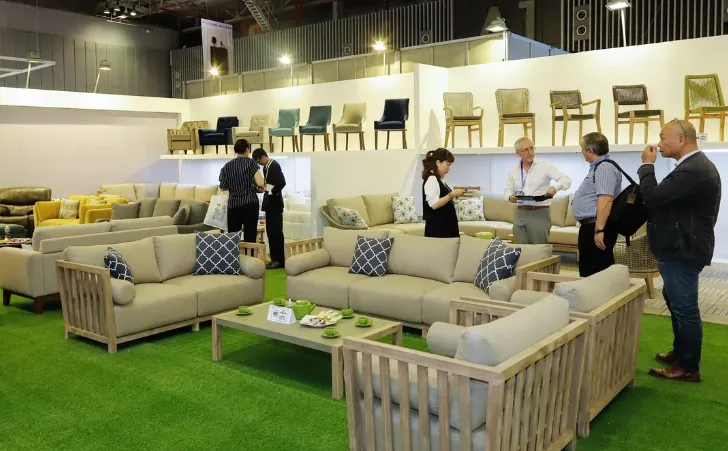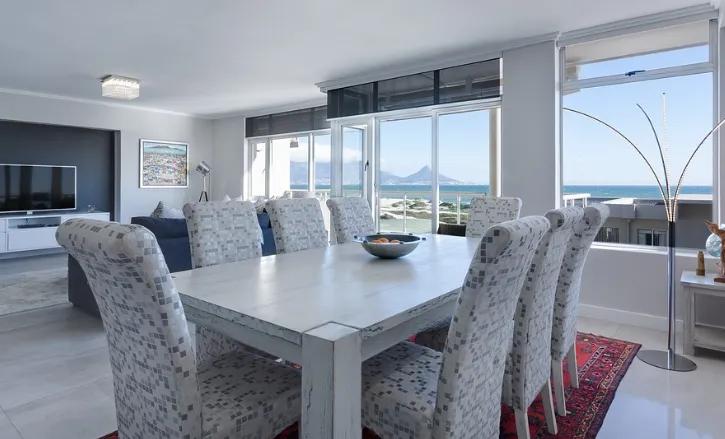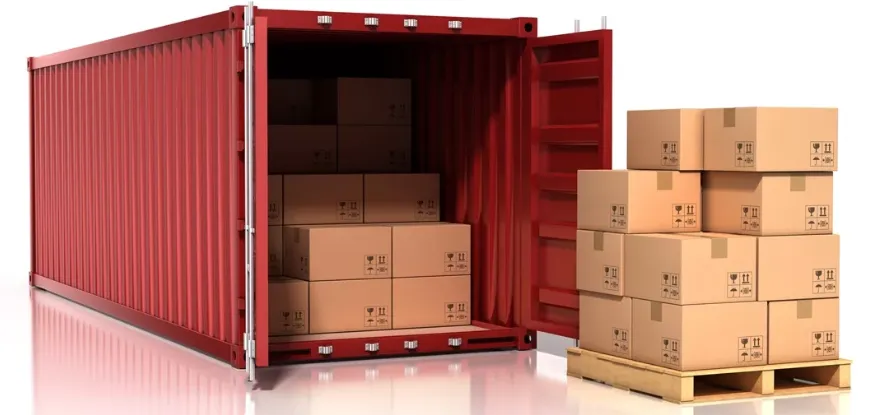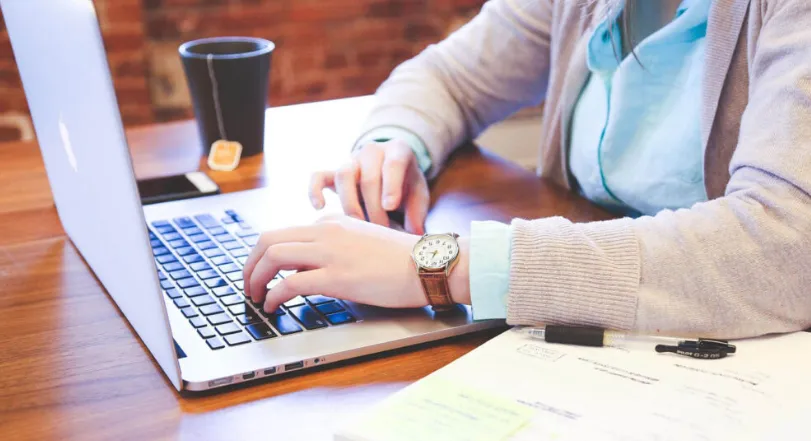The Ultimate Guide to Furniture Purchasing in China: Cost Savings and Logistics Strategies

Sourcing furniture from China offers unbeatable variety and cost-effective sourcing, but the process can feel like a labyrinth of logistical nightmares and quality concerns. You're not just buying a product; you're managing a complex international supply chain.
This guide cuts through the complexity. As seasoned logistics experts, we've distilled the entire process into a clear, actionable blueprint. We'll provide not just theory but proven strategies and downloadable tools—like our Landing Cost Calculator and Inspection Checklist—to save you time, money, and costly mistakes. Let's build your optimized sourcing strategy.

Before you contact a single supplier, you must have crystal-clear specifications. Vague requests lead to misquoted prices and unsuitable partners.
Materials: Don't just say "wood." Specify the exact type:Solid teak, rubberwood with MDF panels, etc. For upholstery, specify upholstery fabrics grade (e.g., 100% linen vs. polyester blend) and fire-retardancy requirements.
Dimensions & Packaging: Provide precise H/W/D measurements. Crucially, specify if you require Ready-to-Assemble (RTA) flat-pack furniture, which drastically reduces shipping volume and cost, or fully assembled pieces. Discuss packaging—double-wall cartons, corner protectors—to prevent transit damage.
Quality Tiers:Are you targeting a budget market, mid-range, or luxury segment? This determines which manufacturing hub sourcing specialized materials in China (e.g., Foshan for mid-to-high-end, Dongguan for premium) is right for you.
The product price is just the beginning. Your real cost is the landed cost:
Product Cost + Shipping Fee + Insurance + Export/Import Duties & Taxes + Customs Broker Fees + Inland Transportation = Landed Cost
We will provide a calculator for this later.
Ignoring regulations is a recipe for seizure at customs. Research:
Safety Standards: e.g., CARB ATCM for formaldehyde in North America, CE marking for the EU, and AS/NZS standards for Australia.
Materials Restrictions: CITES for endangered timber species, REACH for chemical substances.
Labeling Requirements: Country of Origin, care labels, etc.
Your supplier choice will make or break your project.

2.1. The Five Sourcing Channels: A Strategic Comparison
B2B Platforms (Alibaba, Made-in-China): Good for beginners. Use filters for "Verified" and "Assessed Suppliers." Never rely on site ratings alone.
Industry Trade Shows (Canton Fair, CIFF): The gold standard. Meeting face-to-face allows you to assess quality firsthand and build relationships.
Direct Factory Visits (Foshan Sourcing Trip): For high-volume orders, nothing beats visiting the factory unannounced to audit their production capacity, quality control processes, and working conditions.
Sourcing Agents: They act as your local eyes and ears, handling negotiations, factory audits, and QC for a fee (typically 5-10%). Ideal if you lack time or local expertise understanding sourcing agent requirements.
Referrals & Niche Platforms: Industry networks or platforms like Houzz can lead to specialized product sourcing.
2.2. The Supplier Vetting Questionnaire
Go beyond price. Ask these targeted questions:
"Can you provide a detailed breakdown of your FOB terms?"
"What is your process for quality control during production?"
"Can I see your audit reports (e.g., BSCI) and certificates for my target market?"
"What is your protocol if a production batch fails inspection?"
2.3. The Sample Order: Your First Quality Gate
Pay for the sample. A free sample is often a "best case" scenario, not representative of mass production.
Test the sample rigorously. Assemble it, check the finish durability, and ensure it matches your specifications exactly.
Keep the approved sample to use as a reference during pre-shipment inspection.
This is where expertise pays for itself. The choice between sea, air, and rail is a function of cost, urgency, and volume.

3.1. Sea Freight: The Workhorse for Furniture
FCL (Full Container Load): Best for volumes over 15 CBM. You rent the entire container (20 ft, ~28 CBM; 40 ft, ~58 CBM). It's more secure and faster at port, as it avoids consolidation delays.
LCL (Less than Container Load): Ideal for smaller shipments (e.g., 2-15 CBM). You pay for the volume you use. However, it's susceptible to delays from consolidation/deconsolidation and has a higher risk of handling damage.
Pro Tip: For LCL, always ask your freight forwarder about the weight/volume ratio (chargeable weight). Heavy items might be charged by weight, not volume.
3.2. Air & Rail Freight: The Balanced Alternatives
Air Freight: Extremely fast (3-7 days) but expensive (5-8x sea freight cost). Only viable for high-value, low-volume, or emergency shipments.
Rail Freight (China-Europe Block Trains): A fantastic middle ground. About twice as fast as sea (14-18 days) and 30-50% cheaper than air. Capacity and schedule reliability can vary.
3.3. Demystifying Incoterms: Who Controls What?
EXW (Ex-Works): You manage everything from the factory gate onward. Only for experienced importers with a strong logistics partner.
FOB (Free on Board): The most common and balanced term. The supplier gets the goods to the origin port. You (via your forwarder) handle the main carriage, insurance, and destination logistics. This is usually recommended for most importers.
CIF (Cost, Insurance, and Freight): The supplier arranges the main carriage and insurance. This may seem easier, but you lose control over carrier selection and freight costs. The risk transfers to you once the ship sails.
Clearing customs is non-negotiable. Preparation is key.
4.1. The Non-Negotiable Document Checklist
You will need:
Commercial Invoice: Must accurately state the value of the goods.
Packing List: Details of what is in each carton, including dimensions and weight.
Bill of Lading (Sea) or Air Waybill (Air): The title of the goods.
Certificate of Origin: Often required for duty calculation.
Import Declarations: Specific to your country (e.g., ISF for USA, C88 for UK).

4.2. HS Codes and Duty Calculation
Every product has a Harmonized System (HS) code. Classifying your furniture correctly is critical, as it determines the import duty rate. Misclassification can lead to fines and delays. Your freight forwarder or a customs broker can assist.
Protecting your investment is paramount.
5.1. The Three-Stage Inspection Process
Pre-Production Check: Verifying raw materials against your specifications.
During Production Inspection (DUPRO): Conducted when 20-40% of the order is complete. Catches problems early.
Pre-Shipment Inspection (PSI): The final check on 100% completed, packed goods. It uses AQL sampling to statistically determine if the batch meets your quality level. We provide a comprehensive QC checklist for this stage.
5.2. The Essentials of Cargo Insurance
The carrier's liability is limited. If a container falls overboard or is damaged in a storm, you bear the loss without insurance. All-risk insurance is a small percentage of the cargo value (e.g., 0.3-0.5%) for complete peace of mind. Never skip it.
Strategy 1: Optimize Container Space. Design your product range to fit efficiently into standard container sizes. Mixing items can maximize space utilization.
Strategy 2: Plan for Shipping Seasonality. Freight rates spike before Chinese New Year and peak season (Q3). Plan shipments for off-peak times (e.g., Q2) for better rates.
Strategy 3: Negotiate FOB, Not CIF. You gain leverage to negotiate with multiple freight forwarders for the best shipping rate.
Strategy 4: Consolidate with Other Importers. If your volumes are small, partner with other businesses to ship LCL together, potentially negotiating a better rate for a larger consolidated volume.
Strategy 5: Consider Alternative Ports of Departure. While Shenzhen and Shanghai are major hubs, ports like Ningbo or Qingdao might offer competitive rates.
Strategy 6: Implement Robust QC. The cost of one rejected container load far outweighs the cost of a thorough inspection program.
Strategy 7: Use a Professional Freight Forwarder. A good forwarder doesn't just book space; they advise on the most efficient routes, handle complex paperwork, and solve problems before they cost you money.
1. Q: What is a typical payment term structure when working with a new furniture supplier in China?
A: A common and secure payment structure for new partnerships is the 30/70 split. You pay 30% of the total amount as a deposit upfront to secure the production order. The remaining 70% balance is paid against a copy of the Bill of Lading before the goods are shipped. This protects both parties. For established relationships, terms like 20/80 or even 10/90 can be negotiated. Always use secure payment methods like Telegraphic Transfer (T/T) or Letters of Credit (L/C).
2. Q: How do I handle returns or claims if the furniture arrives damaged or is defective?
A: This is a critical reason to have cargo insurance. The process is: 1) Document everything immediately: Take photos/videos of the damaged goods and packaging as you unload. 2) Notify your freight forwarder and insurance provider within the stipulated timeframe (usually 3-5 days). 3) The insurance surveyor will assess the damage. 4) File a claim with the supporting evidence. Without insurance, you would need to file a claim against the shipping carrier, but their liability is very limited. For quality defects identified during inspection, you should negotiate repair, replacement, or a price reduction with the supplier before shipment.
3. Q: Are there any hidden costs I should be aware of beyond the quoted sea freight price?
A: Yes, the freight quote is often just the "ocean freight" cost. Be sure to ask your forwarder for a all-inclusive quote that details "THC" (Terminal Handling Charges), "Bunker Adjustment Factor" (fuel surcharge), "Documentation Fees," and "Customs Clearance Fees" at the destination. On the destination side, watch for "Port Congestion Surcharges," "Demurrage" (if the container is not returned on time), and inland trucking fees from the port to your warehouse.
4. Q: My furniture designs are unique. How can I protect my intellectual property (IP) when manufacturing in China?
A: Proactive measures are key. 1) Sign a strong NDA (Non-Disclosure Agreement) and IPA (Intellectual Property Agreement) with the factory before sharing any designs. 2) Register your designs and trademarks in your target market and, if possible, in China. 3) Work with suppliers who have a good reputation and can provide references. 4) Consider splitting production of key components between different factories to prevent any single partner from having the complete design.
5. Q: What is the lead time I should expect from order confirmation to delivery at my warehouse?
A: Lead time has four parts: Production Time (4-8 weeks) depending on order complexity and factory schedule + Inland Transport to Port (1 week) + Ocean Shipping (4-6 weeks for North America/EU) + Customs Clearance & Final Delivery (1-2 weeks). In total, a realistic timeline is 10 to 16 weeks. Always build in a buffer for unexpected delays.
6. Q: Is it possible to source small quantities of furniture, or do factories only accept large orders?
A: Yes, it's possible, but it requires a different strategy. Look for suppliers on B2B platforms who advertise "small MOQ" (Minimum Order Quantity). Alternatively, consider working with a trading company that consolidates orders from multiple small buyers to meet a factory's MOQ. Be prepared for a higher per-unit cost, as you won't benefit from economies of scale.
7. Q: How do I ensure the furniture I import meets fire safety and chemical regulations (like formaldehyde limits) in my country?
A: Don't just take the supplier's word for it. Specify the exact standard (e.g., CA TB 117-2013 for the US, UK Furniture Fire Safety Regulations) in your purchase contract. Require the supplier to provide a valid test report from an accredited third-party lab (like SGS, Intertek). For extra security, you can arrange for a pre-shipment sample to be tested independently before the full production run begins.
8. Q: What is the best way to communicate with Chinese suppliers to avoid misunderstandings?
A: Clarity is paramount. 1) Use simple, direct English. Avoid idioms and slang. 2) Communicate in writing (email, WeChat) for all important decisions to have a record. 3) Use visuals: Send diagrams, photos, and marked-up drawings. 4) Summarize key points after a conversation: "As we agreed, the leg color will be matte black, not glossy." 5) Consider using a bilingual sourcing agent if communication becomes a significant barrier.
9. Q: Can I visit the factory during production? What should I look for during a visit?
A: Absolutely, and it's highly recommended for large orders. Schedule the visit during the mid-production stage. Don't just look at the finished products. Observe the factory floor organization, quality of raw materials in storage, skill of workers, and quality control checks on the line. Ask to see their QC records. A professional factory will be transparent and welcome a serious buyer's visit.
Contact us
Call Us: +86 193 7668 8822
Email:[email protected]
Add: Building B, No.2, He Er Er Road, Dawangshan Community, Shajing Street, Bao'an District, Shenzhen, China